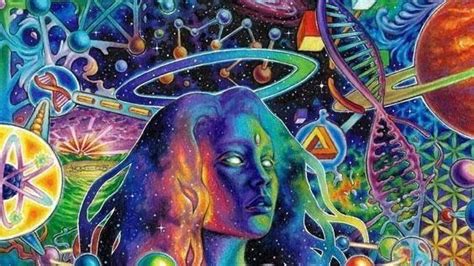Joyously, I walked out of the front door and down the two front steps. The sun was shining and the sky, clear. It was about twenty steps until I reached my next destination, when suddenly, a snake appeared in my path – having sprung from the low, dying grass to my left. Its color faded – like a washed out white, or even gray. Maybe at some point it was green, when it could’ve blended into fresh blades. The creature’s base was coiled, probably about 2 feet if it were able to extend itself fully; but it danced around erratically, seemingly chasing its tail in circles. I had jumped back and screamed, a normal reaction. Yet, it’s child-like movements and inability to really move soon rendered it non-threatening. It attempted to lunge at my exposed ankles a couple of times, but I raised my right leg and thrusted my foot towards its head. My sneaker protected my feet as I stomped.

I felt like a slithering unwrapping from around my legs and imagined it falling to the floor, beside my bed. I awoke at 5:55am.
It’s not very often when I have dreams, so I think – we actually dream about an average of 4-6 times per night — but when I do, they are extremely vivid and realistic; sometimes even controlling them (Look up lucid dreaming). I’ve been so immersed in the scene I sometimes wake up sweating; a character in a live-action picture.
Are dreams complex concoctions of the mind, or do they relate, metaphorically, to features of our waking life? Psychiatrist and psychoanalyst, Carl Jung, believed dreams compensate for parts of the psyche that are suppressed or underdeveloped in “real” life. Freud thought they are symbolic of unconscious thoughts or wishes. Ancient civilizations, such as Babylonians and Egyptians, viewed dreams as sacred, even prophetic, and some had rituals in which oracles would interpret these cognitive processes – believing the dream state was a thin veil between the spiritual and physical world, offering messages from beyond our conscious mind. There is also special attention given to dreams in indigenous/aboriginal cultures around the world.

No one really knows what dreams are, or why we have them; and, there are infinite ways to interpret them. Ultimately, it is up to the receiver/experiencer to validate what it means. However, what we do know is that dreams are a series of images, emotions, thoughts or sensations that occur when we sleep. Most often, we have them, involuntarily, and remember the psychological phenomena during the REM (rapid eye-movement) stage of our slumber.
I am a believer that dreams hold insight and messages for us to uncover. I remember in July, specifically when we entered Chiron retrograde – which brought forth insecurities, fears and patterns of pain that needed healing – a lot of people around me started disclosing that they had started having dreams. There were also some other universal cycles that were requiring emotional purging and spiritual evolution around this time, so I wasn’t surprised so many people were having intense dreams – I started to lowkey pry and bring dreams into the conversations, rather bluntly.
“Have you been having any specific dreams lately?”
“You know what – I have!”
“Hmm, I see… Tell me more.”

As my curiosity pushed me to inquire further, I started noticing a connection that they were all having dreams from their past, specifically interactions with particular people. At some point or another, I’d always hear, “I don’t know why this person was involved,” or “I forgot about that, it was weird,” but as I slyly started to help them decipher what they remembered, it aligned with unhealed emotional issues that had been expressed in earlier conversations, pre-dream work, and ultimately, unhealed emotions around those specific people or situations, that continued to play out in different ways in their current life. “You need to unpack that,” I’d tell them, and guide as much as I could.
There’s never really a “right” answer to decoding dreams; for, we can sometimes create a self-serving bias towards its meaning. So, like with any therapeutic technique, it is important to remain as honest and open-minded as possible; and, with this in particular, objective.
- What were the actions of the dreamer within the dream?
- Who or what was there? Visually or sensed?
- What do they mean in relation to the dreamer?
- What were the interactions like?
- Any distinctive animals or colors?
- What was the setting, and its meaning to you?
- What season of the year or time of day did this take place?
- What emotions were felt?
- What was the plot?
- Was there any dialogue?
- Were there any lessons you could initially gather?
- Does it relate to something you have refused to face, or have ignored?
- How did you show up?
- Age, appearance, etc.
- Were you the observer or part of the sequence of events?

Dreams can elicit emotional and physical responses, and whenever possible, should definitely be included in psychological understanding and personal development. I was recently reading about and looking into a newer cognitive behavioral technique called image rehearsal therapy, which was developed to address concerns related to posttraumatic distress and disturbing nightmares. The goal is to rewrite the narrative the dream is showing us, changing the content to something more positive and encouraging. It also suggests mentally rehearsing the new dream script for up to 20 minutes a day, in the hopes of decreasing the frequency and/or intensity of the dream.
Snakes can be seen as phallic and have sexual meanings – which I think definitely do not apply in my particular scenario, and they can also signify hidden fears, worries or temptation. In addition, serpents can symbolize transformation and self-renewal. Lastly, they can be indicative of evil energies or enemies that want to hinder you and do not want you to accomplish something tangible in life. *Side-note: It’s funny because I know about something trying to cause delays in me receiving something, so thank you for that confirmation, Spirit.* Seeing the snake coming out of the grass means something different than if the setting was inside a home. I’m sure many of us understand what it means to notice “snakes in the grass,” a phrase typically used to allude to treacherous people who pretend to be your friend, but have deceptive and ill intentions. There are various meanings due to color or type of snake. Some may interpret the animals biblically or literally. All symbols have various interpretations depending on the cultural lens the receiver is looking through. I’ve spent some time decoding my dream, and one thing I am happy about is that I was able to overcome and triumph over the being or issue – brushing it off and walking away unfazed.
If you ever wake up and remember your dreams, try writing them down to decipher if there is some hidden message within your visions. You never know what truths you may reveal.

